Edward Raff
University of Maryland, Baltimore County, Booz Allen Hamilton
EMBER2024 -- A Benchmark Dataset for Holistic Evaluation of Malware Classifiers
Jun 05, 2025Abstract:A lack of accessible data has historically restricted malware analysis research, and practitioners have relied heavily on datasets provided by industry sources to advance. Existing public datasets are limited by narrow scope - most include files targeting a single platform, have labels supporting just one type of malware classification task, and make no effort to capture the evasive files that make malware detection difficult in practice. We present EMBER2024, a new dataset that enables holistic evaluation of malware classifiers. Created in collaboration with the authors of EMBER2017 and EMBER2018, the EMBER2024 dataset includes hashes, metadata, feature vectors, and labels for more than 3.2 million files from six file formats. Our dataset supports the training and evaluation of machine learning models on seven malware classification tasks, including malware detection, malware family classification, and malware behavior identification. EMBER2024 is the first to include a collection of malicious files that initially went undetected by a set of antivirus products, creating a "challenge" set to assess classifier performance against evasive malware. This work also introduces EMBER feature version 3, with added support for several new feature types. We are releasing the EMBER2024 dataset to promote reproducibility and empower researchers in the pursuit of new malware research topics.
Quick-Draw Bandits: Quickly Optimizing in Nonstationary Environments with Extremely Many Arms
May 30, 2025Abstract:Canonical algorithms for multi-armed bandits typically assume a stationary reward environment where the size of the action space (number of arms) is small. More recently developed methods typically relax only one of these assumptions: existing non-stationary bandit policies are designed for a small number of arms, while Lipschitz, linear, and Gaussian process bandit policies are designed to handle a large (or infinite) number of arms in stationary reward environments under constraints on the reward function. In this manuscript, we propose a novel policy to learn reward environments over a continuous space using Gaussian interpolation. We show that our method efficiently learns continuous Lipschitz reward functions with $\mathcal{O}^*(\sqrt{T})$ cumulative regret. Furthermore, our method naturally extends to non-stationary problems with a simple modification. We finally demonstrate that our method is computationally favorable (100-10000x faster) and experimentally outperforms sliding Gaussian process policies on datasets with non-stationarity and an extremely large number of arms.
Stop Walking in Circles! Bailing Out Early in Projected Gradient Descent
Mar 25, 2025Abstract:Projected Gradient Descent (PGD) under the $L_\infty$ ball has become one of the defacto methods used in adversarial robustness evaluation for computer vision (CV) due to its reliability and efficacy, making a strong and easy-to-implement iterative baseline. However, PGD is computationally demanding to apply, especially when using thousands of iterations is the current best-practice recommendation to generate an adversarial example for a single image. In this work, we introduce a simple novel method for early termination of PGD based on cycle detection by exploiting the geometry of how PGD is implemented in practice and show that it can produce large speedup factors while providing the \emph{exact} same estimate of model robustness as standard PGD. This method substantially speeds up PGD without sacrificing any attack strength, enabling evaluations of robustness that were previously computationally intractable.
Differentially Private Iterative Screening Rules for Linear Regression
Feb 25, 2025Abstract:Linear $L_1$-regularized models have remained one of the simplest and most effective tools in data science. Over the past decade, screening rules have risen in popularity as a way to eliminate features when producing the sparse regression weights of $L_1$ models. However, despite the increasing need of privacy-preserving models for data analysis, to the best of our knowledge, no differentially private screening rule exists. In this paper, we develop the first private screening rule for linear regression. We initially find that this screening rule is too strong: it screens too many coefficients as a result of the private screening step. However, a weakened implementation of private screening reduces overscreening and improves performance.
Multi-layer Radial Basis Function Networks for Out-of-distribution Detection
Jan 05, 2025



Abstract:Existing methods for out-of-distribution (OOD) detection use various techniques to produce a score, separate from classification, that determines how ``OOD'' an input is. Our insight is that OOD detection can be simplified by using a neural network architecture which can effectively merge classification and OOD detection into a single step. Radial basis function networks (RBFNs) inherently link classification confidence and OOD detection; however, these networks have lost popularity due to the difficult of training them in a multi-layer fashion. In this work, we develop a multi-layer radial basis function network (MLRBFN) which can be easily trained. To ensure that these networks are also effective for OOD detection, we develop a novel depression mechanism. We apply MLRBFNs as standalone classifiers and as heads on top of pretrained feature extractors, and find that they are competitive with commonly used methods for OOD detection. Our MLRBFN architecture demonstrates a promising new direction for OOD detection methods.
Can LLMs Obfuscate Code? A Systematic Analysis of Large Language Models into Assembly Code Obfuscation
Dec 24, 2024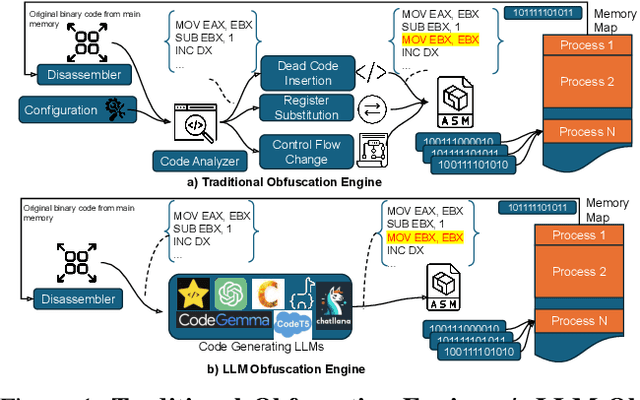
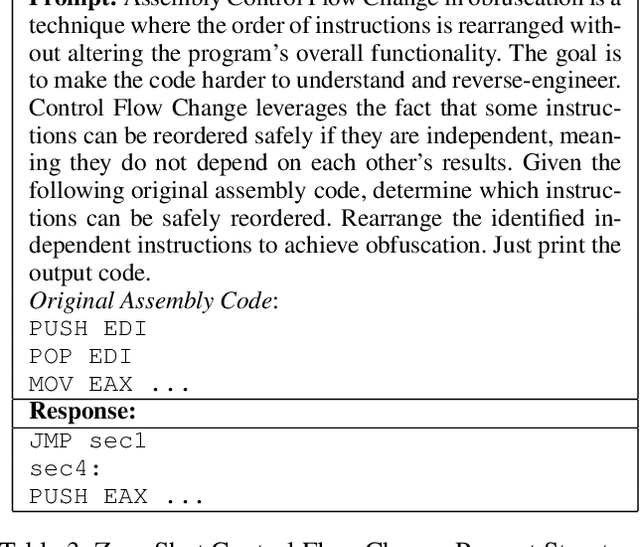
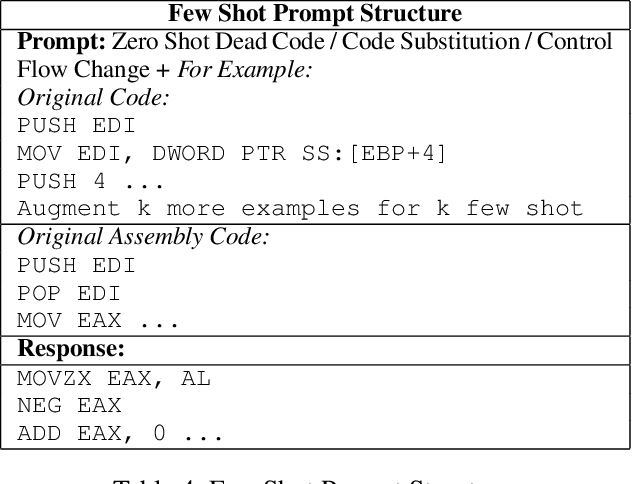

Abstract:Malware authors often employ code obfuscations to make their malware harder to detect. Existing tools for generating obfuscated code often require access to the original source code (e.g., C++ or Java), and adding new obfuscations is a non-trivial, labor-intensive process. In this study, we ask the following question: Can Large Language Models (LLMs) potentially generate a new obfuscated assembly code? If so, this poses a risk to anti-virus engines and potentially increases the flexibility of attackers to create new obfuscation patterns. We answer this in the affirmative by developing the MetamorphASM benchmark comprising MetamorphASM Dataset (MAD) along with three code obfuscation techniques: dead code, register substitution, and control flow change. The MetamorphASM systematically evaluates the ability of LLMs to generate and analyze obfuscated code using MAD, which contains 328,200 obfuscated assembly code samples. We release this dataset and analyze the success rate of various LLMs (e.g., GPT-3.5/4, GPT-4o-mini, Starcoder, CodeGemma, CodeLlama, CodeT5, and LLaMA 3.1) in generating obfuscated assembly code. The evaluation was performed using established information-theoretic metrics and manual human review to ensure correctness and provide the foundation for researchers to study and develop remediations to this risk. The source code can be found at the following GitHub link: https://github.com/mohammadi-ali/MetamorphASM.
Human-Readable Adversarial Prompts: An Investigation into LLM Vulnerabilities Using Situational Context
Dec 20, 2024



Abstract:Previous research on LLM vulnerabilities often relied on nonsensical adversarial prompts, which were easily detectable by automated methods. We address this gap by focusing on human-readable adversarial prompts, a more realistic and potent threat. Our key contributions are situation-driven attacks leveraging movie scripts to create contextually relevant, human-readable prompts that successfully deceive LLMs, adversarial suffix conversion to transform nonsensical adversarial suffixes into meaningful text, and AdvPrompter with p-nucleus sampling, a method to generate diverse, human-readable adversarial suffixes, improving attack efficacy in models like GPT-3.5 and Gemma 7B. Our findings demonstrate that LLMs can be tricked by sophisticated adversaries into producing harmful responses with human-readable adversarial prompts and that there exists a scope for improvement when it comes to robust LLMs.
What Do Machine Learning Researchers Mean by "Reproducible"?
Dec 05, 2024Abstract:The concern that Artificial Intelligence (AI) and Machine Learning (ML) are entering a "reproducibility crisis" has spurred significant research in the past few years. Yet with each paper, it is often unclear what someone means by "reproducibility". Our work attempts to clarify the scope of "reproducibility" as displayed by the community at large. In doing so, we propose to refine the research to eight general topic areas. In this light, we see that each of these areas contains many works that do not advertise themselves as being about "reproducibility", in part because they go back decades before the matter came to broader attention.
Living off the Analyst: Harvesting Features from Yara Rules for Malware Detection
Nov 27, 2024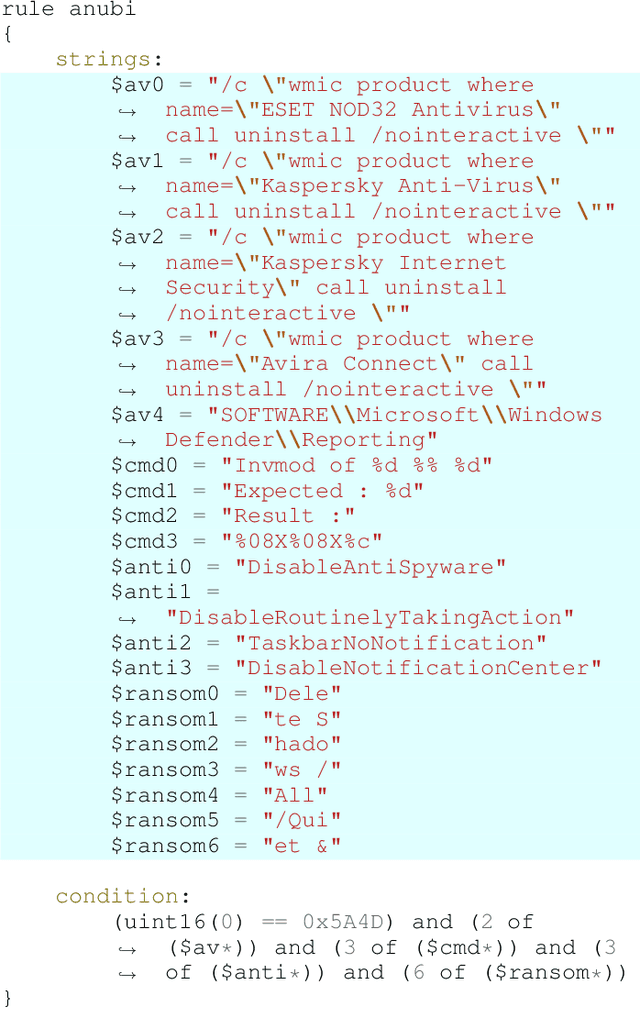
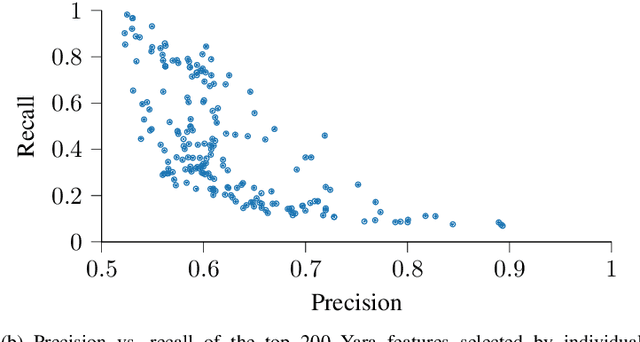
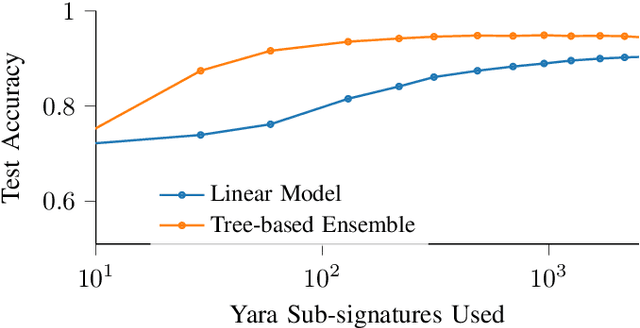
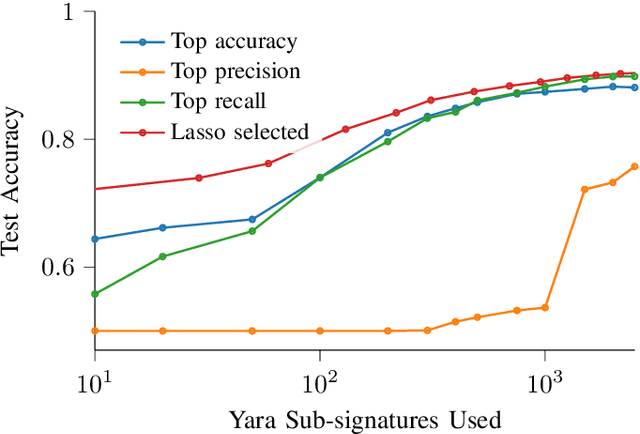
Abstract:A strategy used by malicious actors is to "live off the land," where benign systems and tools already available on a victim's systems are used and repurposed for the malicious actor's intent. In this work, we ask if there is a way for anti-virus developers to similarly re-purpose existing work to improve their malware detection capability. We show that this is plausible via YARA rules, which use human-written signatures to detect specific malware families, functionalities, or other markers of interest. By extracting sub-signatures from publicly available YARA rules, we assembled a set of features that can more effectively discriminate malicious samples from benign ones. Our experiments demonstrate that these features add value beyond traditional features on the EMBER 2018 dataset. Manual analysis of the added sub-signatures shows a power-law behavior in a combination of features that are specific and unique, as well as features that occur often. A prior expectation may be that the features would be limited in being overly specific to unique malware families. This behavior is observed, and is apparently useful in practice. In addition, we also find sub-signatures that are dual-purpose (e.g., detecting virtual machine environments) or broadly generic (e.g., DLL imports).
Stabilizing Linear Passive-Aggressive Online Learning with Weighted Reservoir Sampling
Oct 31, 2024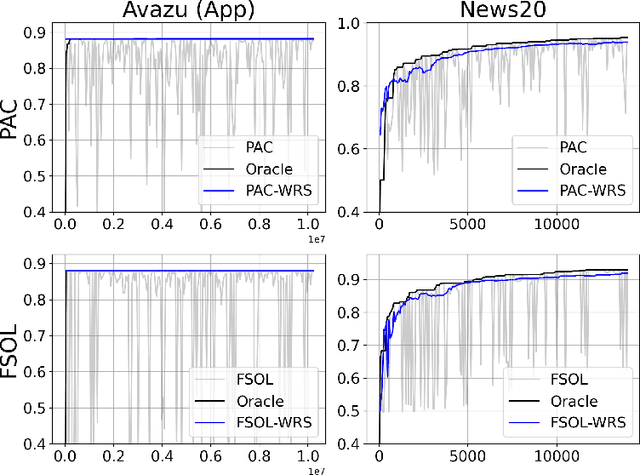
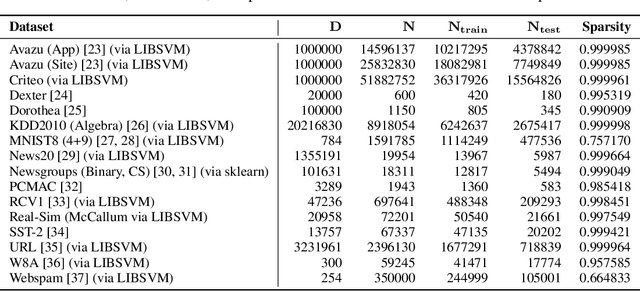


Abstract:Online learning methods, like the seminal Passive-Aggressive (PA) classifier, are still highly effective for high-dimensional streaming data, out-of-core processing, and other throughput-sensitive applications. Many such algorithms rely on fast adaptation to individual errors as a key to their convergence. While such algorithms enjoy low theoretical regret, in real-world deployment they can be sensitive to individual outliers that cause the algorithm to over-correct. When such outliers occur at the end of the data stream, this can cause the final solution to have unexpectedly low accuracy. We design a weighted reservoir sampling (WRS) approach to obtain a stable ensemble model from the sequence of solutions without requiring additional passes over the data, hold-out sets, or a growing amount of memory. Our key insight is that good solutions tend to be error-free for more iterations than bad solutions, and thus, the number of passive rounds provides an estimate of a solution's relative quality. Our reservoir thus contains $K$ previous intermediate weight vectors with high survival times. We demonstrate our WRS approach on the Passive-Aggressive Classifier (PAC) and First-Order Sparse Online Learning (FSOL), where our method consistently and significantly outperforms the unmodified approach. We show that the risk of the ensemble classifier is bounded with respect to the regret of the underlying online learning method.
 Add to Chrome
Add to Chrome Add to Firefox
Add to Firefox Add to Edge
Add to Edge